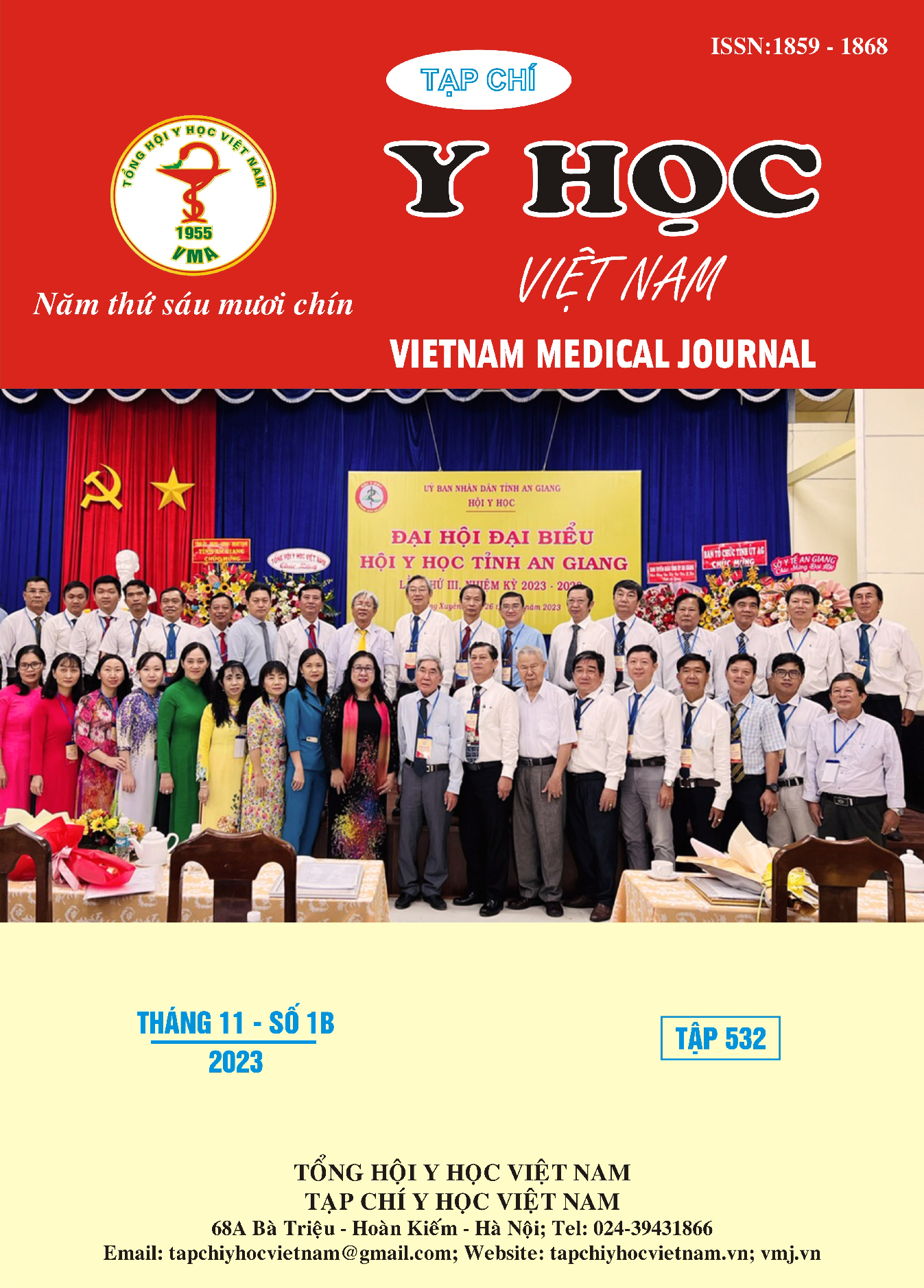RESULTS OF BILIARY PERCUTANEOUS TRANSLUMINAL FORCEPS BIOPSY IN PATIENTS SUSPECTED OF HAVING CHOLANGIOCARINOMA AT HA NOI MEDICAL UNIVERSITY HOSPITAL
Main Article Content
Abstract
Purpose: To evaluate results of biliary percutaneous transluminal forceps biopsy in patients suspected of having cholangiocarcinoma at Ha Noi Medical University Hospital. Materials and methods: A retrospective and prospective, descriptive study of 52 patients suspected of having cholangiocarcinoma at Radiology Center, Ha Noi Medical University Hospital, who underwent biliary percutaneous transluminal forceps biopsy, at Ha Noi Medical University Hospital from Feb-2020 to Dec-2022. 18 patients underwent biopsy procedure with percutaneous transhepatic cholangiography (PTC) and 34 patients with percutaneous transhepatic choledochoscopic. In each patient, two to five specimens were taken from the lesion. The final diagnosis for each patient was confirmed with pathologic findings at surgery, additional clinical and radiologic follow-up. Results: The procedure was sucessful in 98% cases. 16 of 51 patients had correct diagnosis of cholangiocarcinoma. 2 patients had other malignant diagnoses. 33 patients were proved to be true-negative. Therer were 2 false-negative and no false-positive diagnoses. Sensitivity, specificity and accuracy of this procedure in in malignant biliary obstructions were 88,9%, 100% and 96,1% respectively. Sensitivity of biopsy in the distal part of the common bile duct was similar to in other sites (CI = 95%). There were a few major complications related to biopsy procedures occurred (7,6%), 1 patient had hemobilia, 2 patients had bile leakage and 1 patient had pneumothorax. Conclusion: Percutaneous transluminal forceps biopsy is a safe procedure, easy to perform and provide high accuracy in the diagnosis of cholangiocarcinoma and other malignant biliary obstructions.
Article Details
Keywords
malignant biliary obstructions, biliary percutaneous transluminal forceps biopsy, cholangiocarcinoma.
References
2. Weber A, Schmid RM, Prinz C. Diagnostic approaches for cholangiocarcinoma. World J Gastroenterol. 2008; 14(26): 4131-4136. doi: 10.3748/ wjg.14.4131
3. Ierardi AM, Mangini M, Fontana F, et al. Usefulness and safety of biliary percutaneous transluminal forceps biopsy (PTFB): our experience. Minimally Invasive Therapy & Allied Technologies. 2014; 23(2): 96-101. doi: 10.3109/ 13645706. 2013. 854807
4. Jung GS, Huh JD, Lee SU, Han BH, Chang HK, Cho YD. Bile Duct: Analysis of Percutaneous Transluminal Forceps Biopsy in 130 Patients Suspected of Having Malignant Biliary Obstruction. Radiology. 2002; 224(3): 725-730. doi: 10.1148/ radiol.2242011501
5. Li Z, Li TF, Ren JZ, et al. Value of percutaneous transhepatic cholangiobiopsy for pathologic diagnosis of obstructive jaundice: analysis of 826 cases. Acta Radiol. 2017;58(1):3-9. doi:10.1177/ 0284185116632386
6. Chang HY, Liu B, Wang YZ, et al. Percutaneous transhepatic cholangiography versus endoscopic retrograde cholangiography for the pathological diagnosis of suspected malignant bile duct strictures. Medicine. 2020;99(11): e19545. doi:10.1097/MD.0000000000019545
7. Park JG, Jung GS, Yun JH, et al. Percutaneous transluminal forceps biopsy in patients suspected of having malignant biliary obstruction: factors influencing the outcomes of 271 patients. Eur Radiol. 2017; 27(10):4291-4297. doi: 10.1007/ s00330-017-4796-x


